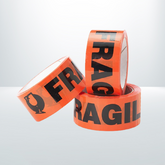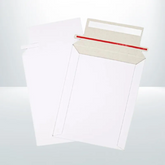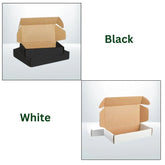From an environmental and working viewpoint, packaging materials must be put under control in any business or home. Adequate knowledge of the storage and disposal of packaging materials helps improve the work cycles of the company, maintains the reputation of the organization, and secures a sound environment. This guide will take you through the clearing out and reorganization of your storage for packed boxes, validating packing techniques, and disposal practices.
Why Proper Packaging Storage Matters
It is very effective to ensure that packaging performance is kept at par. Such that when a package is received, the packaging materials should be checked for quality. Damaged drawers can ruin the good image of a brand as they incur additional costs and waste. People generally prefer completing a job first, then giving attention to proper storage, but it pays to avoid replacing resources that might have been saved through time.
Best Practices for Storing Packaging Materials
Credit to Quality Inspection on Arrival
Inspect the boxes as they arrive. Check for cracks, damages, or anything else that would render the box unsuitable. A small quality inspection on arrival can just save your customers' unboxing experience, which is the key to their loyalty.
Ideal Storage Conditions
Cool and Dry Place
The boxes should preferably be stored in a dry pit, devoid of moisture. Being quite porous, cardboard boxes could absorb some moisture, leaving them prone to mildew or other forms of damage.
Keep Away from Direct Sunlight
Store your boxes in direct sunlight, which would fade the printed designs and reduce their beauty.
Prevent Water Damage
Avoid keeping the items close to the piping or leak-prone areas. Cover your boxes with sheets to prevent head-on liquid splashes and drips.
Store the Flat Box in a Horizontal Position
When you retain mailer boxes or folding cartons in their flat form, you should store them sideways to avoid bending or folding.
Storage Time Limitations
Though it is hard keeping all those boxes for long periods, if you can, try to use them for a year. Fading and dust that come with a long time lead to the quality being compromised.
Efficient Packing Techniques
Organizing Packing Materials
Keep all of your packing supplies-tape, fillers, thank you cards-at your hand's reach. Organization and easy access will speed up your packing process and reduce the chances of you forgetting any items.
Do Not Overstuff with Filler Material
Packing can drag at times, especially for trade fairs or big shipments. So to minimize confusion and chances of disaster, use fillers such as tissue paper and bubble wrap economically. That means keeping constant pressure in the box to hold the items in place without putting them at risk of damage from over-packaging.
Assembly-Line Packing for Bulk Orders
When doing multiple orders, an assembly line improves packing speed. Each team member is assigned a given task for quick and efficient packing to ensure that all orders are filled promptly and correctly.
Sustainable Packaging Disposal
The correct disposal of packing materials is the last procedure in shipping. Those that could not be salvaged should be disposed of via ecological routes to the greatest extent possible.
Recyclable Cardboard Boxes
Strong cardboard boxes are excellent for recycling and ecologically friendly. Flatten such boxes and place them in your recycling bin, provided they are dry and clean. Many recycling companies can convert those boxes into new products, thereby preventing undue trashing.
Using Boxes Creatively
Before throwing away any box, do consider some interesting reuse for it. They could always become containers for storage or shipping, or they may even be used in craft projects. Finding alternate uses gives the boxes a longer life before getting disposed of.
Manure of Paper Towels and Tissue
Some paper towels and tissues may be composted instead of being discarded. Composting these products diverts useless products from landfills and converts them into great nutrients for the soil.
Throwing Away Non-Recyclables
Foam packaging is one material that cannot be recycled safely through the usual recycling system. Donations to mailing stores could be better or saved for packing purposes in the future.
FAQ
1. What is the best way to store packed boxes?
The best way to store packed boxes is in a cool and dry place apart from direct sunlight or sources of moisture. Their storage should be horizontal to prevent bending or creasing of boxes. Boxes should be checked for damage regularly.
2. Can I recycle all types of cardboard boxes?
Most cardboard boxes can be recycled, including packaging boxes for shipping and storage. However, boxes that have been contaminated by food or liquids may not be recycled. Always flatten your boxes and make sure they are clean and dry before placing them into recycling.
3. What should I do with packing materials that cannot be recycled?
For packing material that isn't recyclable, such as foam peanuts, you could choose to reuse them for your own packing needs or donate them to local shipping stores that accept foam materials. If those options are not applicable, throw them into the garbage according to local waste disposal authority instructions.
Conclusion
You can create a greener system while making your operations more capable by availing the best storage practices, efficient packing methodologies, and sustainable disposal. Proper management of packaging materials will not only result in a major positive impact on your business but also contribute significantly to a sustainable future. Remember that a cleaning and properly disposed packaging system speaks well for any business and aids customer loyalty.
Given all of these things, you can confidently pack with an operation that seeks to be good for the bottom line and the planet. Discover more helpful, green packaging options with NuPack Packaging. Find options best aligned with your values regarding eco-friendliness.
















